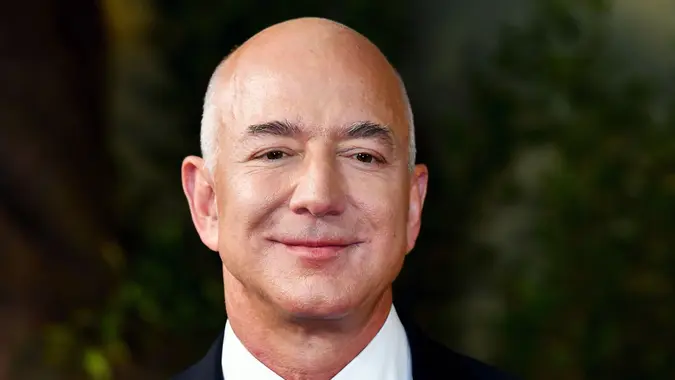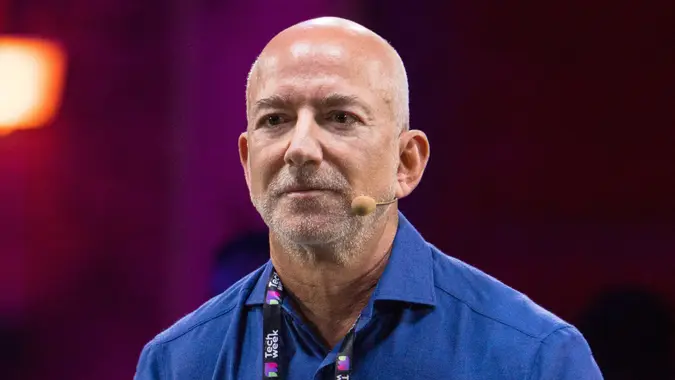How Much Debt Is Too Much To Marry Into? Rachel Cruze Weighs In

Commitment to Our Readers
GOBankingRates' editorial team is committed to bringing you unbiased reviews and information. We use data-driven methodologies to evaluate financial products and services - our reviews and ratings are not influenced by advertisers. You can read more about our editorial guidelines and our products and services review methodology.

20 Years
Helping You Live Richer

Reviewed
by Experts

Trusted by
Millions of Readers
In 2025, the average person in the U.S. owes approximately $62,500 in debt, including student loans, mortgages, credit cards and personal loans. This means, if you’re planning to get married, or hoping to in the future, your partner will likely be bringing debt to the union.
If you’ve worked hard to pay off or avoid debt, this can be extremely frustrating. Some have questioned if it’s worth it to marry someone saddled with debt and where to draw the line. Rachel Cruze, a personal finance expert and cohost of “The Ramsey Show,” dove into the topic in a recent YouTube video. Here’s how she would approach this tricky situation.
Accept the Situation
If you decide to marry someone who has debt, you must accept it first and foremost. Cruze made the important point that the strongest marriages view themselves as a team. Finger-pointing and blaming your spouse for having debt will cause division and resentment. Likewise, keeping financial matters separate can lead to marital problems.
Dave Ramsey, Cruze’s father, has explained why this is so important in the past. According to him, financial fights and problems are the leading cause of divorce in the U.S. However, he said, it’s not about how much money or debt you have, but how you handle it as a team.
So, there isn’t a specific number to look for when deciding how much debt is too much. Instead, determine if you’ll be able to accept the situation and work together.
Make a Plan
While acceptance is an essential step, it doesn’t fix anything on its own. You and your partner must come together to find a path to becoming debt-free and stick to it. If your spouse isn’t willing to make lifestyle changes to get out of debt, you should view it as a red flag.
One plan that Cruze brought up is the debt snowball method. To take advantage of this strategy, list your debts from smallest to largest and continue making the minimum payments to each. Save up extra money and put it all toward the smallest debt you have. As you begin to pay off your smallest debts, you’ll gain momentum and have more each month to throw at your larger debts.
A variation of the debt snowball method is the debt avalanche method. The difference is that you list your debts from highest to lowest interest rate and work to pay down the highest-interest debts first. By doing this, you’ll save more in the long term and can contribute more to your other debts.
Pay It Off
With a plan in place, you can shift your priorities together and find ways to put more money toward your debt. Cruze suggested selling things you don’t need, trying to get a raise, looking for a side hustle and cutting nonessential expenses from your budget. However, it’s important not to begin combining finances and paying off someone else’s debts until after you get married and it becomes your joint debt.
Cruze made the point that couples can demonstrate their commitment to getting out of debt even before they tie the knot. In some instances, she’s seen the partner who is in debt working harder and putting more toward paying off their own debt. Meanwhile, the partner without debt is saving extra money so that when they get married, that amount can go directly toward paying it down.
More From GOBankingRates
- Nearly 1 in 3 Americans Hit by a Costly Holiday Scam, Norton Survey Shows -- How To Avoid This
- Here's What the Average Social Security Payment Will Be in Winter 2025
- How Middle-Class Earners Are Quietly Becoming Millionaires -- and How You Can, Too
- The Easiest Way to Score $250 for Things You Already Do
 Written by
Written by  Edited by
Edited by 

























